Garmin’s Rally Brings More Options and Interchangeable Bodies to the Power Pedal Category
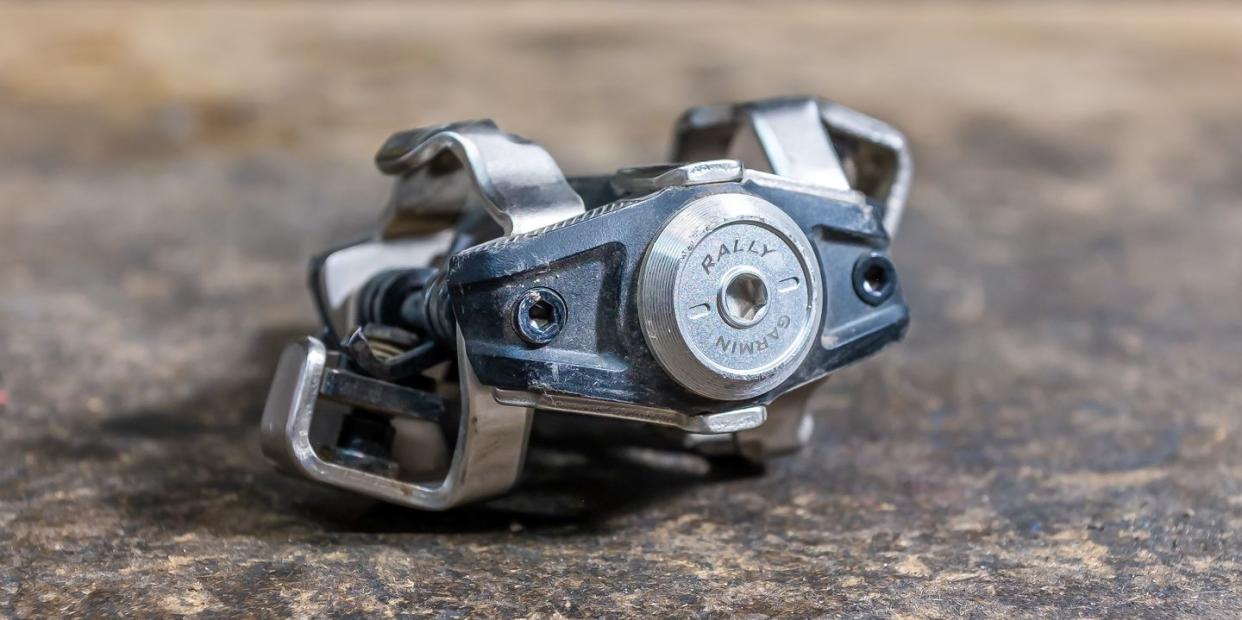
The Takeaway: Love some things—off-road and SPD-SL options, easy to install, easy to move bike to bike, interchangeable bodies—but accuracy issues with my sample set gives me pause.
New SPD compatible XC pedal bodies for mountain/gravel/cyclocross use and a new Shimano SPD-SL version for the roadies. Look Keo version continues.
Bodies sold separately so users can swap power axles into different bodies based on the season or current needs
Upgrade bodies compatible with Garmin Vector 3 axles
Single or dual-sided power options
Upgrade kits to convert single-sided power to dual-sided power
BUY RALLY XC NOW BUY RALLY RS NOW BUY RALLY RK NOW
Goodbye Vector, Hello Rally
Garmin’s Vector 3, launched in 2017, was a big step forward for the brand’s power meter pedals. Gone was the wonky pod that dangled off the crank like a carbuncle. This simplified installation and made the pedals more durable. Added was Bluetooth connectivity which made the pedals play better with apps like Zwift and allowed the pedal to connect with Garmin’s smartphone app. The latter allowed the user to update the pedals more easily and tweak some settings.
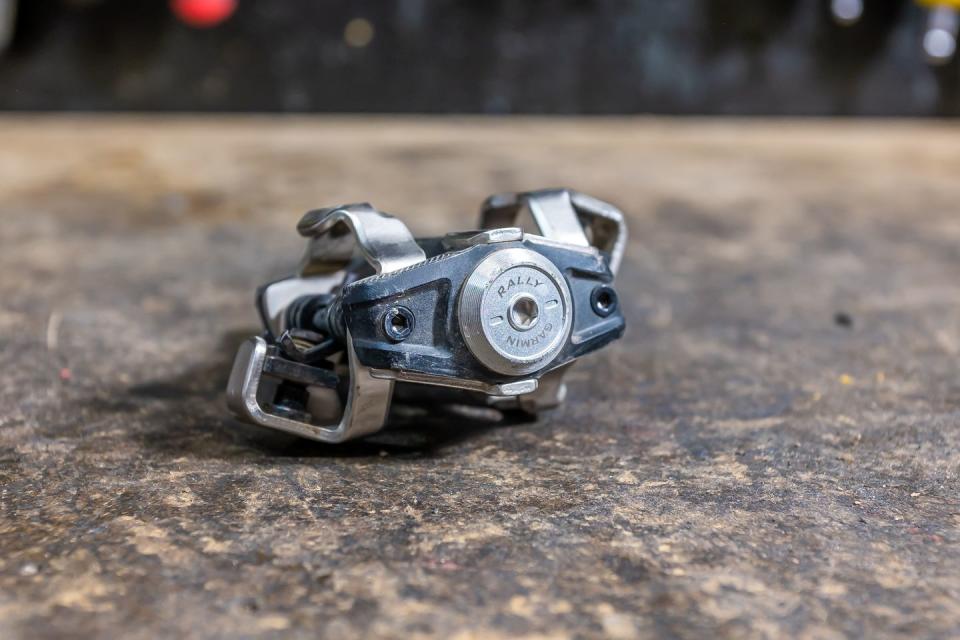
Though it has a new name, the Rally power meter is a moderate update to the Vector 3. The Rally’s axle is almost identical to the Vector 3’s, “From a mechanical design perspective, they are the same,” Kenny Carlson, Garmin’s senior product manager, told me. That’s important, for reasons I get into below.
There are some tweaks to the electronics. “The design of the circuit board was updated, which also comes with a minor firmware update but isn’t something that we can bring back to Vector 3,” Carlson said. This change “Improves our sleep current which makes our 120hr battery life much more robust in more use cases and also helps ensure the product comes out of the box for a customer with good battery life.”
So as far as the power meter’s functionality and features, the Rally is essentially identical to the Vector 3. What’s new are the bodies.
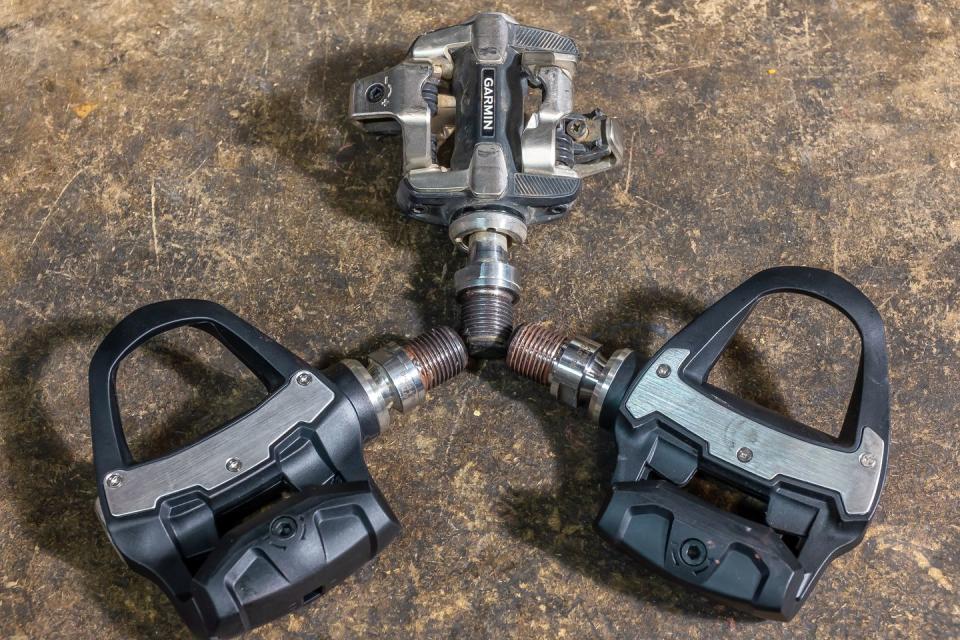
Garmin Rally—Three Pedal Options
While the axles are primarily the same, the Rally bodies are new.
Most noticeably, there’s a double-sided dirt-friendly pedal (Rally XC) compatible with Shimano’s SPD cleats. This is a big deal for mountain, gravel, and cyclocross riders looking for a power solution that’s not tied to ever-changing drivetrain standards. Doubly so, since SRM’s X-Power dirt pedal seems to be vaporware.
For the road, there’s a Shimano SPD-SL compatible body (Rally RS) for riders who prefer this pedal system to the Look Keo platform that most power pedals use (Garmin’s Vector used the Keo system). This is Garmin’s second go at a power meter for the SPD-SL system: In the Vector 2 days, Garmin, somewhat quietly, offered a kit to fit their power meter axles into Shimano’s Ultegra 6800 road pedal bodies. With Wahoo’s Speedplay-based Powrlink power meter pedal coming, riders now have three road pedal system options for their power meter pedals.
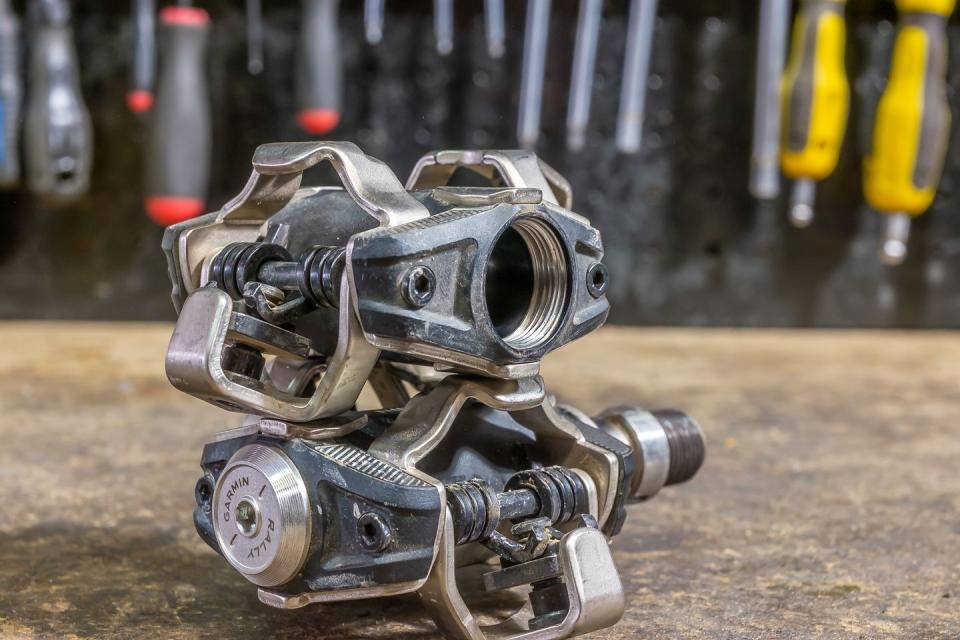
The final option is the Rally RK, which uses Look Keo cleats. It is essentially the same pedal as the Vector 3, though with the updated axles.
However, Garmin made some changes to the battery door compared to Vector 3. All the pedals have metal thread inserts in the body for the battery door; an upgrade from the Vector 3’s had plastic threads. They also redesigned the battery holder’s contacts. Garmin says these changes are the result of updated robustness testing.
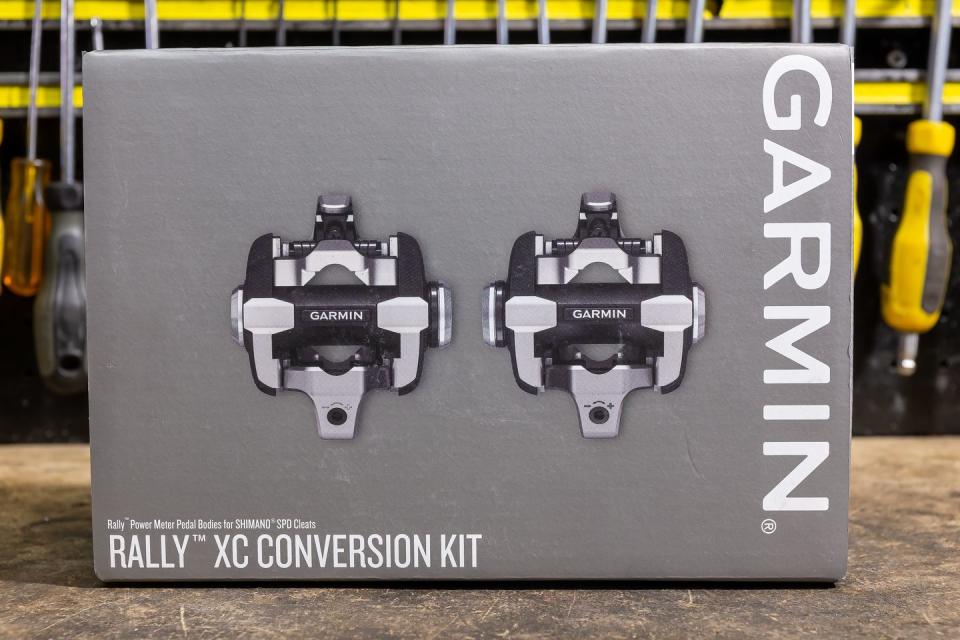
Garmin Rally—Interchangeable Bodies
Because all the Rally pedals use the same axles, Garmin offers pedal body conversion kits that let owners of, say, the Keo compatible RK body swap to the XC dirt body. So, if you don’t want to invest in several power meters for your different bikes, you can buy one Rally power meter and the second set of bodies and move them around where most needed.
Garmin sent me the RK200 pedals and an XC conversion kit so I could try the swap myself. The biggest hang-up I experienced was finding a socket that let me remove the nut the holds the axle in the body. Garmin requires a 12mm socket with an outside diameter of less than 17mm. The OD of all four of the 12mm sockets I had a home was too large, so I had to go to my local hardware store with a set of calipers in hand to find a socket with a small enough OD. I got some strange looks from the store employees as I measured several sockets, but I did find one, and it only cost about four bucks. Still, I think Garmin should include a socket with the conversion kits.
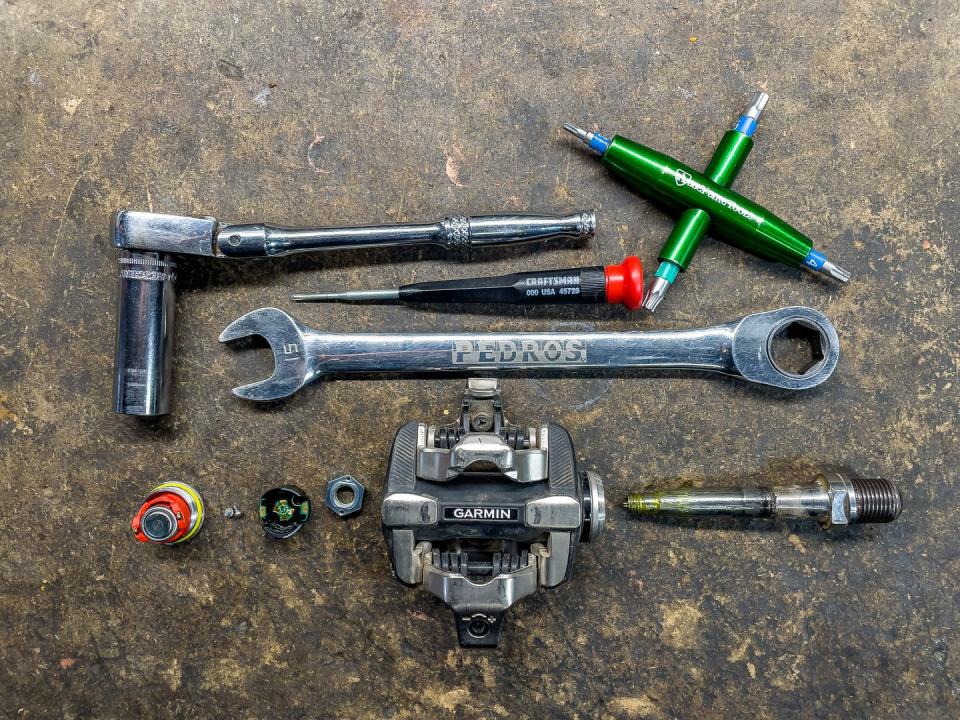
Once I had a compatible socket, the conversion was straightforward and took only about five minutes. Do be careful not to lose the teeny-tiny screws that hold the battery carriage onto the axle nut, though—one sneeze, and you’ll blow these little guys across the room.
Remember how I mentioned above that Vector 3’s axle was dimensionally the same as the Rally’s? Here’s why that matters to Vector 3 owners: your axles are compatible with the RS and XC body conversion kits. And as you’ll see below, I’ve confirmed this by doing it myself.
Garmin Rally—Single or Double Sided Options and Prices
As before, Garmin offers the Rally as a single-sided option (100 series) with the power meter in the left pedal or as a dual-power option (200 series) with power axles in both pedals. There’s also an upgrade kit to convert a single-sided power set to a dual-sided power set.
—Rally XC Prices—
RS 100 $1,200
RS 200 $700
RS single to dual-sided upgrade $600
RS pedal body conversion kit $250
—Rally RS Prices—
RS 100 $1,100
RS 200 $650
RS single to dual-sided upgrade $550
RS pedal body conversion kit $200
—Rally RK Prices—
RK 100 $1,100
RK 200 $650
RK single to dual-sided upgrade $550
RK pedal body conversion kit $200
Garmin Rally—First Impressions
Garmin sent me a set of RK200 pedals and an XC conversion kit ahead of the launch. As I’ve ridden the Vector 3 tons, I immediately swapped the axles into the XC bodies and used them for a few mountain bike and gravel rides.
The conversion was easy, and the pedals functioned much like Shimano SPD mountain bike pedals. I did feel there was a bit less platform support with the Rally XC than I get from Shimano’s latest XC pedals, though. Also, note that Garmin ships these pedals with the release tension set to its minimum—I had to crank the tension up several clicks to stop unwanted releases.
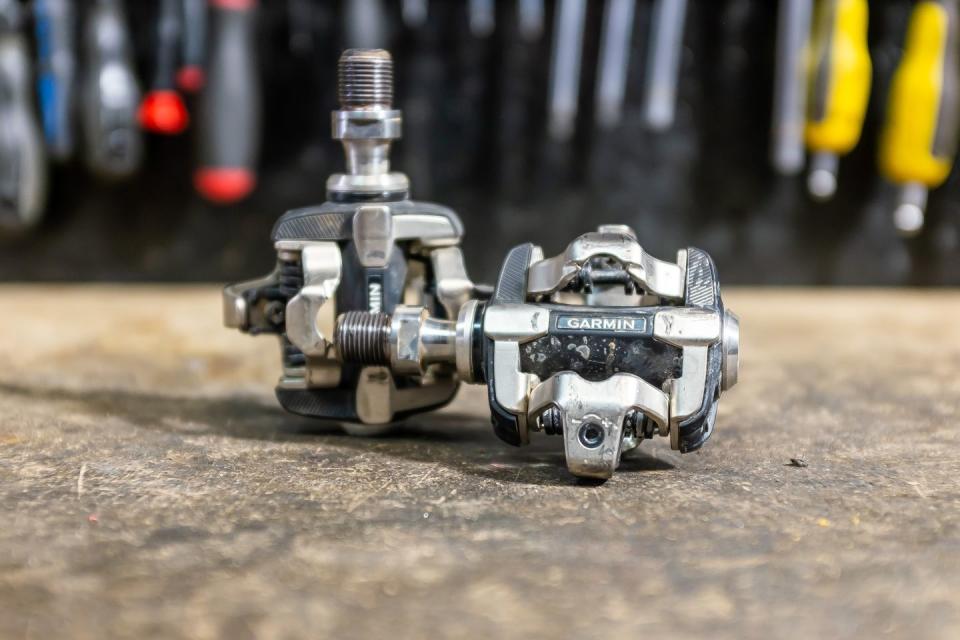
Unfortunately, I had issues with the data the pedals returned. I ride with power enough to know what I’m capable of and my power balance on a typical day. The Rally’s were off—way off. (yes, I installed them correctly, and yes, I calibrated—several times). I’m working with Garmin to sort out what’s going on with my sample pedals; there are no answers yet.
What I saw was the right pedal was reading very high. Based on what I usually see, the Rally almost doubled my right-side power. That lead to crazy power balance numbers— 34% left / 66% right. Since I broke my leg, my power balance is pretty consistently 52% left / 48% right.
It also returned some wackadoodle normalized power readings for my rides. 230 watts NP for one ride even though I spent most of the ride in heart rate zone two and three. Knowing what I’m capable of and where my fitness is right now…HAHAHAHA—NOPE!
While trying to sort out the issue, I stopped mid-ride and tried several things. I unpaired and repaired the pedals to my (Garmin) head unit. I turned off cycling dynamics, turned off auto-zero, and calibrated again and again—no improvement.
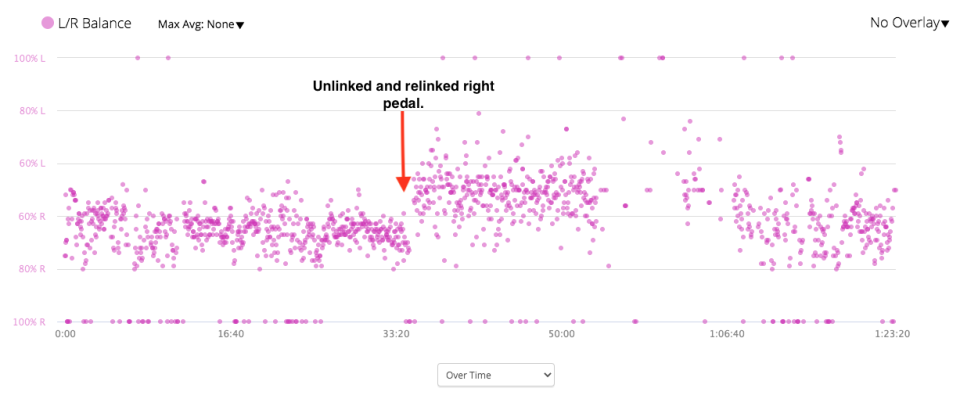
I did see some improvement when I unlinked the right pedal from the left, then relinked them and calibrated again. For a time, my power and balance were where they should be, but then I noticed the right pedal began to drift high again. You can see it happen in the L/R balance plot in my ride summary at Garmin Connect.
While I was dealing with all this, I took the opportunity to swap the axles from my Vector 3 pedals into the XC bodies to make sure it wasn’t something to do with the bodies. With the Vector 3 axles in place, my power numbers returned to where they usually are, so there’s something up with my Rally axles.
After evaluating my data, Carlson, the product manager at Garmin, said, “we do have some beta firmware that is in the works specifically to address some MTB related data issues as well as some low occurring stability fixes that we think could address what you saw both with not being able to calibrate successfully and then in the last part of your MTB ride where you saw things drift.”
Garmin sent me a second Rally 200 power meter to try, but it snowed *shakes fist at sky*, so I haven’t been able to get on the trails to see if this sample is more accurate than the first. I’ll update this post when I get time on the new power meter, if Garmin figures out what’s going on with my first set, and/or when I get a chance to try the beta firmware Carlson mentioned.
You Might Also Like

